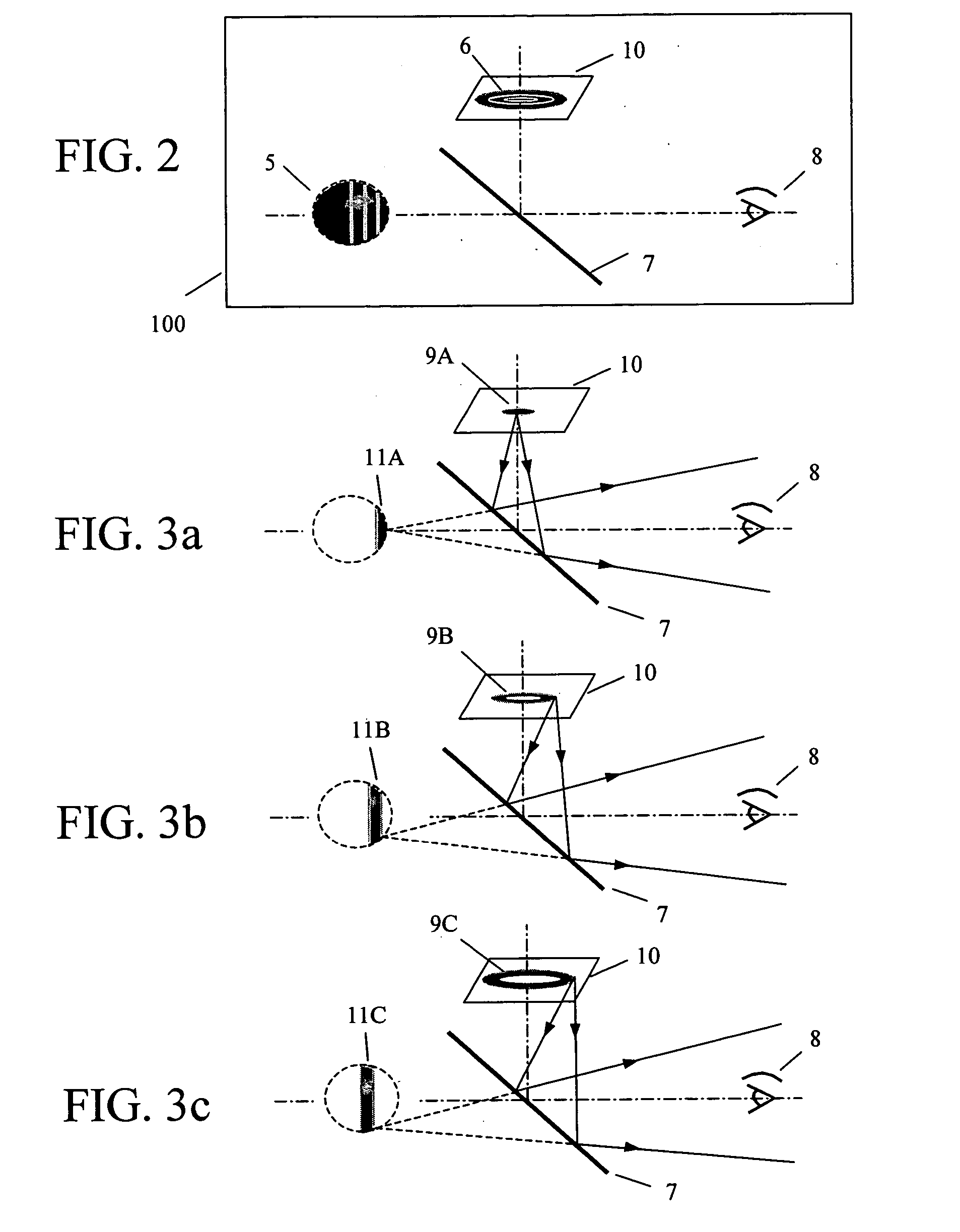Three-dimensional display using variable focusing lens
a three-dimensional display and variable focusing technology, applied in the field of three-dimensional display, can solve the problems of unsuitable display for displaying realistic 3d images, the method does not generate a three-dimensional image in the space, and the use of holography for three-dimensional image display is limited, so as to achieve the effect of no significant increase in data amount, easy conversion, and low cost for providing three-dimensional image data
- Summary
- Abstract
- Description
- Claims
- Application Information
AI Technical Summary
Benefits of technology
Problems solved by technology
Method used
Image
Examples
first embodiment
[0042]FIG. 2 schematically shows a 3D (three-dimensional) display device 100 according to the present invention. The 3D display device 100 includes a 2D (two-dimensional) display 10 displaying a first image 6, and a variable focusing lens 7 receiving light from the 2D display 10 and forming a second image 5. The variable focusing lens 7 changes its focal length so that the second image 5 looks three-dimensional for a viewer 8 of the three-dimensional display device 100.
[0043] A 3D image is generated in the space by imaging depthwise 2D images on corresponding depths in the space with the variable focusing lens. The 2D display displays only pixels that should be imaged at the same depth at a given moment or a given frame, and the variable focusing lens adjusts its focal length in order to image the depthwise image to the required location in the space.
[0044]FIGS. 3a-3c show that the first image 6 includes a predetermined depth number of first depthwise images 9A, 9B, 9C that are dis...
second embodiment
[0064]FIGS. 8a and 8b shows the present invention. FIG. 8a shows how a 3D display device, which has variable focusing lenses 23 corresponding to pixels 26 of a 2D display 22, operates to display a three-dimensional image 24. The partial image displayed by each pixel 26 is imaged at its image depth by the variable focusing lens 23 corresponding to the pixel 26. Since the partial image displayed by each pixel is individually handled by the corresponding variable focusing lens, dividing an image into depthwise images and displaying the depthwise images are not required, and thus this embodiment does not need a high speed 2D display and a high speed variable focusing lens. A 2D display having a usual speed can be used. The size of the variable focusing lens 23 is similar to that of the pixel 26.
[0065]FIG. 8b shows schematically a 3D display device 200. The 3D display device 200 includes a 2D display having a plurality of pixels 26, and a plurality of variable focusing lenses 25. Each of...
PUM
 Login to View More
Login to View More Abstract
Description
Claims
Application Information
 Login to View More
Login to View More - R&D
- Intellectual Property
- Life Sciences
- Materials
- Tech Scout
- Unparalleled Data Quality
- Higher Quality Content
- 60% Fewer Hallucinations
Browse by: Latest US Patents, China's latest patents, Technical Efficacy Thesaurus, Application Domain, Technology Topic, Popular Technical Reports.
© 2025 PatSnap. All rights reserved.Legal|Privacy policy|Modern Slavery Act Transparency Statement|Sitemap|About US| Contact US: help@patsnap.com



